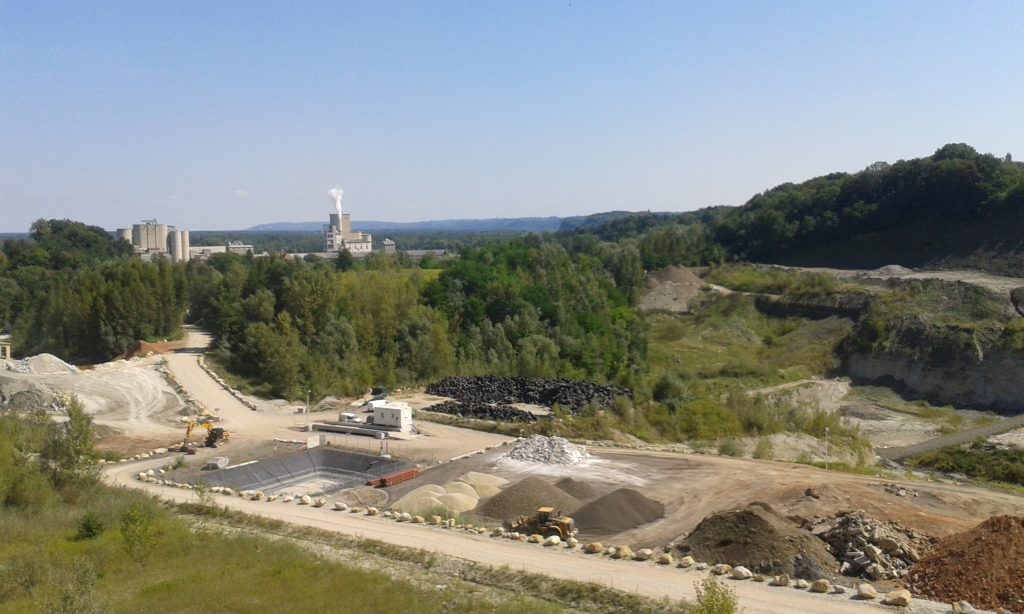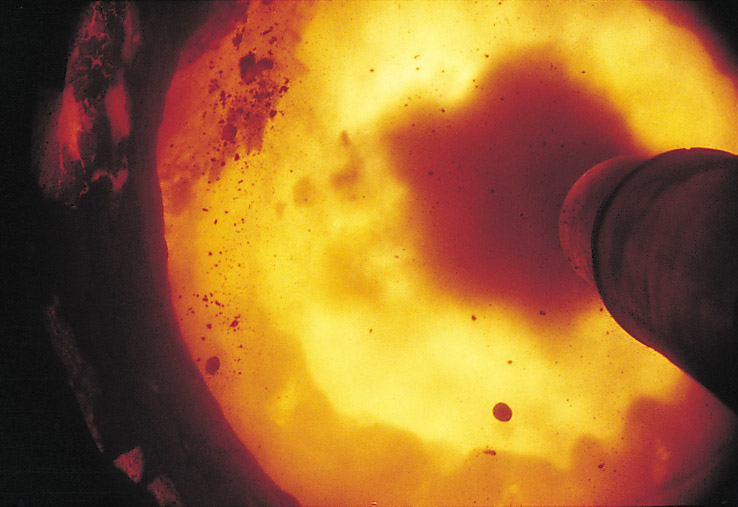Description
The cement industry, and LafargeHolcim under the Geocycle brand, has developed strong expertise in co-processing. This technology refers to the simultaneous recovery of energy and the recycling of mineral materials within one single industrial process: Cement manufacturing. This waste treatment solution allows 100% of the material input to be recovered or recycled in the production process without any additional residue and impact on health and cement quality.
In Retznei (Austria), our cement plant is amongst the best performer worldwide in terms of substitution of thermal energy with alternative fuels such as waste. In 2016, the brand new Geocycle Recycling Center (see picture with recycled raw materials piles) nearby the cement plant settled the benchmark in recycling Construction & Demolition Waste (C&DW) by processing 100,000 tons of C&DW in a year.
The pre-treatment platform offers a complete solution for a full C&D waste stream, in respect of European waste hierarchy. Retznei plant recovers this stream through co-processing, mainly clay bricks, so-called “red fraction”, as an alternative raw material. Otherwise, this stream would go to landfill as it is a non-frost resistant material. Today, 12% of the raw materials used to produce cement in Retznei come from recycled waste.
Added value
This co-processing approach contributes to a more circular economy by transforming waste into recycled material and energy recovery to ensure:
- An optimal use of the waste thanks to a unique simultaneous recovery and recycling process that prevent waste from going to landfill. A particular achievement at the Retznei plant is the co-processing of clay bricks, which can not be recycled in Austria as it is not frost resistant and without co-processing option would go to landfill.
- A contribution to reduction of greenhouse gas by using local waste stream instead of extracting and transporting natural resources and avoiding decarbonisation of limestone, the traditionally natural resource used to produce cement.
- A contribution to prevention of using natural resources by reducing the need for mining and quarrying and using alternative raw materials – thanks to this CD&W stream, the cement plant substitutes 30,000 tons of natural resources by alternative material every year.
- Local activity around the cement plant by creating 3 new direct jobs and several indirect positions.
- In 2016, Geocycle co-processed 4 millions tons of waste : 2.7 millions tons as alternative fuels and 1.3 millions tons as alternative raw material like in Retznei.
Challenges
C&DW accounts for approximately 25% – 30% of all waste generated in the EU and is one of the heaviest and most voluminous waste streams with numerous materials, including concrete, bricks, gypsum, wood, glass, metals, plastic, solvents, asbestos and excavated soil, many of which can be recycled. Finding solutions to recycling C&DW is a priority across Europe.
- Despite its potential, the level of recycling and material recovery of C&DW varies greatly (between less than 10% and over 90%) across the Union mainly because of the lack of sorting.
- If not separated at source, C&DW can contain small amounts of hazardous wastes, the mixture of which can pose particular risks to the environment and can hamper recovery and recycling. Improving identification of materials in buildings and infrastructure with the aim of better sorting out the wastes would significantly increase and upgrade recovery and recycling of C&DW in compliance with the waste hierarchy.

